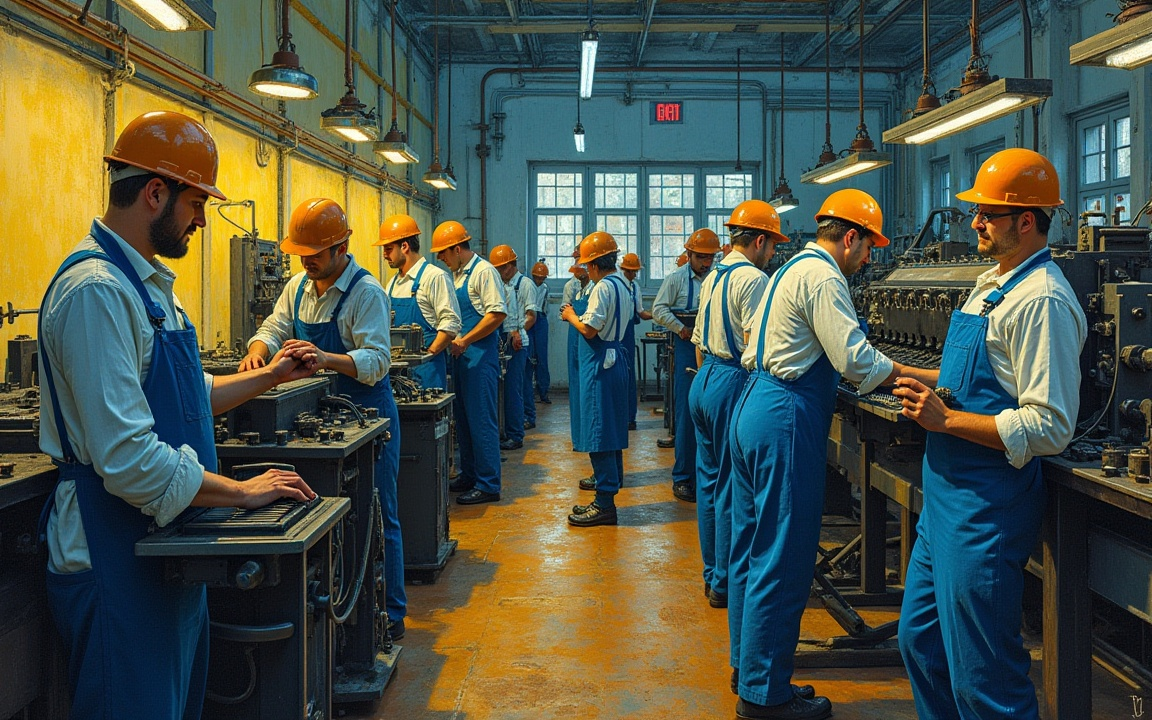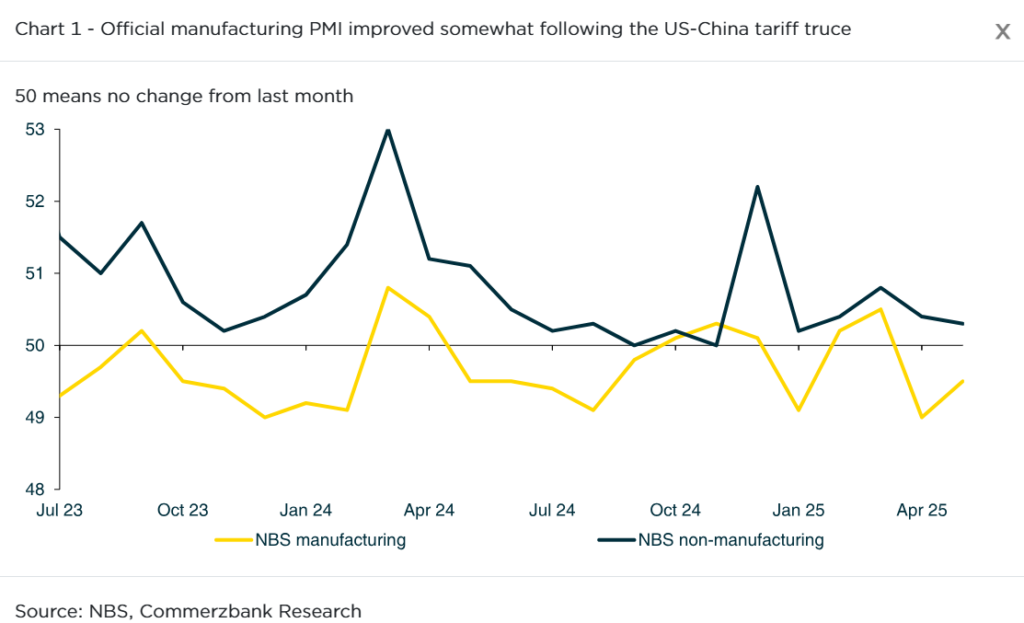
China’s manufacturing PMI improved somewhat in May due to the resumption and frontloading of shipments to the US amid the 90-day tariff truce which will end in mid-August, Commerzbank AG said.
May saw an increase in the official manufacturing PMI to 49.5, up from April’s reading of 49.0, official data showed.
In May, the production subindex rebounded to 50.7, exceeding the neutral 50 threshold after registering 49.8 in April.

Tensions rise despite truce
New export orders saw improvement, increasing to 47.5 in May from April’s 44.7.
Similarly, overall new orders experienced a rise, reaching 49.8 compared to the previous 49.2.
“However, the subindex still remained in contraction territory, reflecting weakness in overall domestic and external demand,” Tommy Wu, senior economist at Commerzbank, said in a report.
Exports should be supported by the tariff truce with the US for the 90-day period till mid-August. However, the two sides have been accusing each other of violating the truce agreement.
Despite the tariff truce, US-China tensions are rising in other sectors.
The Trump administration implemented several measures targeting China.
These included revoking some Chinese student visas, limiting chip design software sales, and attempting to hinder global sales of AI chips from a major Chinese technology company.
Recent comments from US Treasury Secretary Scott Bessent indicate that trade discussions between the two nations are currently in a state of slight standstill.
He noted the possibility of tariffs increasing once more in August should negotiations fail to advance.
Services activity lacklustre
China’s non-manufacturing PMI stayed in expansion mode at 50.3 in May, slightly lower than April’s 50.4, according to official figures.
The construction PMI saw a slight decrease, moving from a previous value of 51.9 to 51, but it still held steady within the subindexes.
Government investment in infrastructure contributed to this support.
Driven by increased holiday spending during the Labour Day holiday in early May, the Services PMI saw a slight increase to 50.2, up from the previous reading of 50.1, Wu noted.
“Nevertheless, such readings suggest domestic demand has remained rather soft despite this year’s policy focus to support consumption,” Wu said.
Policy strength may depend on future tariffs
Tariffs and declining exports are expected to significantly slow China’s economic growth in the latter half of this year and into 2026, according to Commerzbank.
Increased export costs from tariffs will likely reduce international demand and export volumes, negatively impacting the manufacturing sector and potentially employment.
Lower export earnings will affect China’s trade surplus and may decrease investment in export-oriented industries.
This combined effect is projected to moderate overall economic growth, potentially impacting domestic consumption and requiring government policy intervention.
To bolster the economy, China’s government will persist in executing the policies established during the National People’s Congress annual meetings held in March.
Beijing has indicated its readiness to implement further measures as necessary.
Wu said:
We think this will depend on the future path of the tariffs.
The post China’s manufacturing PMI edges up despite ongoing trade tensions appeared first on Invezz

